How can a cat be both alive and dead at the same time? Sounds like nonsense, but factSchrödinger’s Catformed the basis of one of the most important experiments in quantum mechanics. It’s one of the many experiments from the new bookSchrödinger's Cat And 49 Other Experiments That Revolutionised Physicsby Adam Hart-Davis, which explores the great lengths scientists have gone through to explain our world. Here are three from the course of history, and the incredible stories around them.
Is air something? (ca 430 BCE)
Empedocles’ search for the roots of everything
Researcher:Empedocles
Subject Area:Pneumatics
Conclusion:Air is a material substance
The town of Agrigento, in the middle of the southwest coast of the island of Sicily, has some of the finest Greek temple remains anywhere; they stand end to end on a high ridge, proud in the sunshine. There is also a glorious amphitheatre. In the 5th century BCE there lived in the town a Greek philosopher called Empedocles, who performed one of the earliest known scientific experiments, in order to back up his theory about the elements.
Four elements
For hundreds of years others had pondered and argued about what things were made of. Thales had suggested water, because it can turn into ice and into steam; so perhaps it can turn into anything. Others had suggested various combinations of substances. Empedocles declared that everything was a mixture of the four elements (or ‘roots’, as he called them) Earth, Air, Fire and Water, simply combined in various proportions.
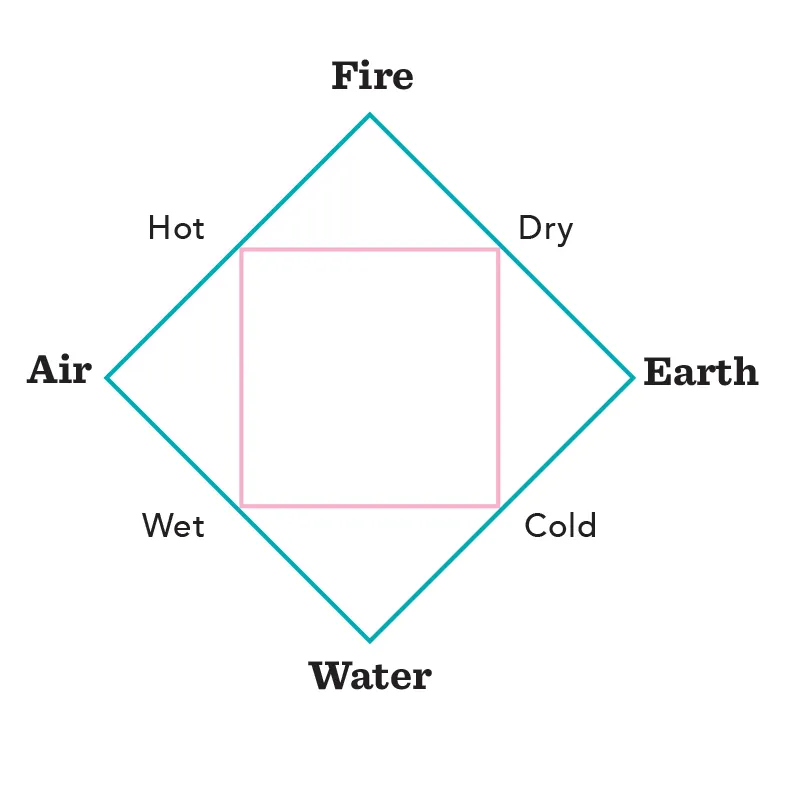
Each element, he said, wants to get back to where it belonged; so earth always falls downwards; water trickles to the sea; air bubbles up through water; and fire tries to get up to the Sun.
These elements were unchanging. They were bound together by love, but always being torn apart by strife; so they were in a constant state of flux.
But there was a bit of a problem, because some cynics said that air could not be an element. Air was nothing; it could not be part of anything; it could not be a root. Empedocles pointed out that air bubbles up through water.
You can see the bubbles; they must be something. This did not satisfy his critics; so he devised a cunning experiment.
Submerging the water clock
To tell the time he used a clepsydra – a water clock – which was a ceramic jar with a small hole in the bottom to let the water trickle out. He turned his clepsydra upside down, put his finger over the hole, and thrust it down into the sea. When he took it out again, he showed that the inside was still dry at the bottom, demonstrating that something had kept the water out. This something had to be air, and therefore air was indeed something, and not nothing.
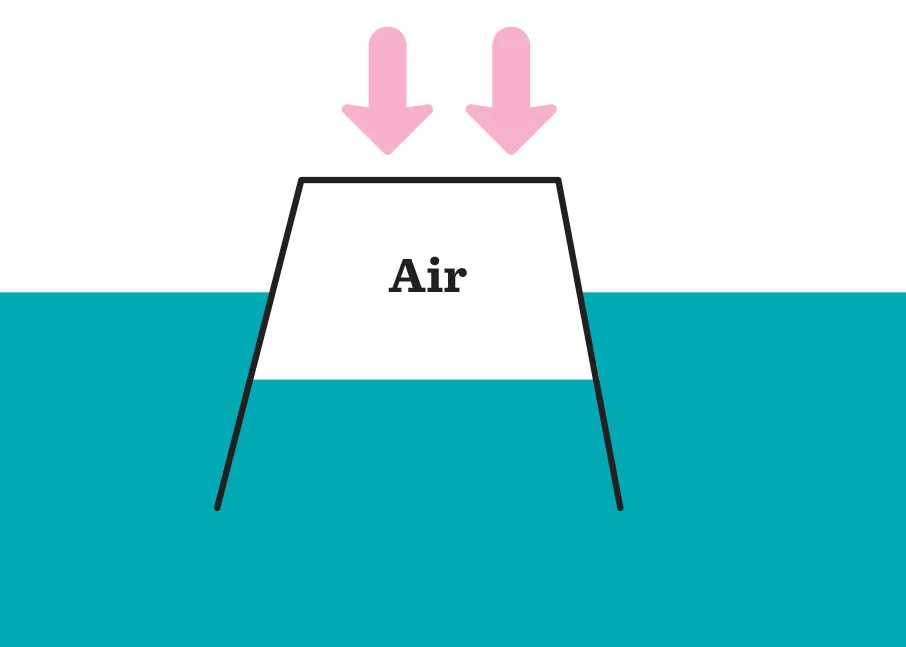
The idea of the four elements Earth, Air, Fire and Water was not seriously challenged until Robert Boyle redefined the notion of the element more than 2,000 years later.
A fiery ending
Empedocles believed he was immortal, and to prove this to his followers he led them up to the top of Mt Etna, the active volcano that towers over the eastern end of the island. There, he is said to have jumped into the smoking crater. According to one legend, one of his sandals was ejected, but he was never seen again. This precipitate action sounds like a mistake, but as a result we remember him to this day; so perhaps it was a good way to become immortal.
Can you weigh the world? (1774)
A heroic experiment using mountains
Researcher:Nevile Maskelyne
Subject Area:Gravity
Conclusion:Earth is not hollow, but has a metallic core.
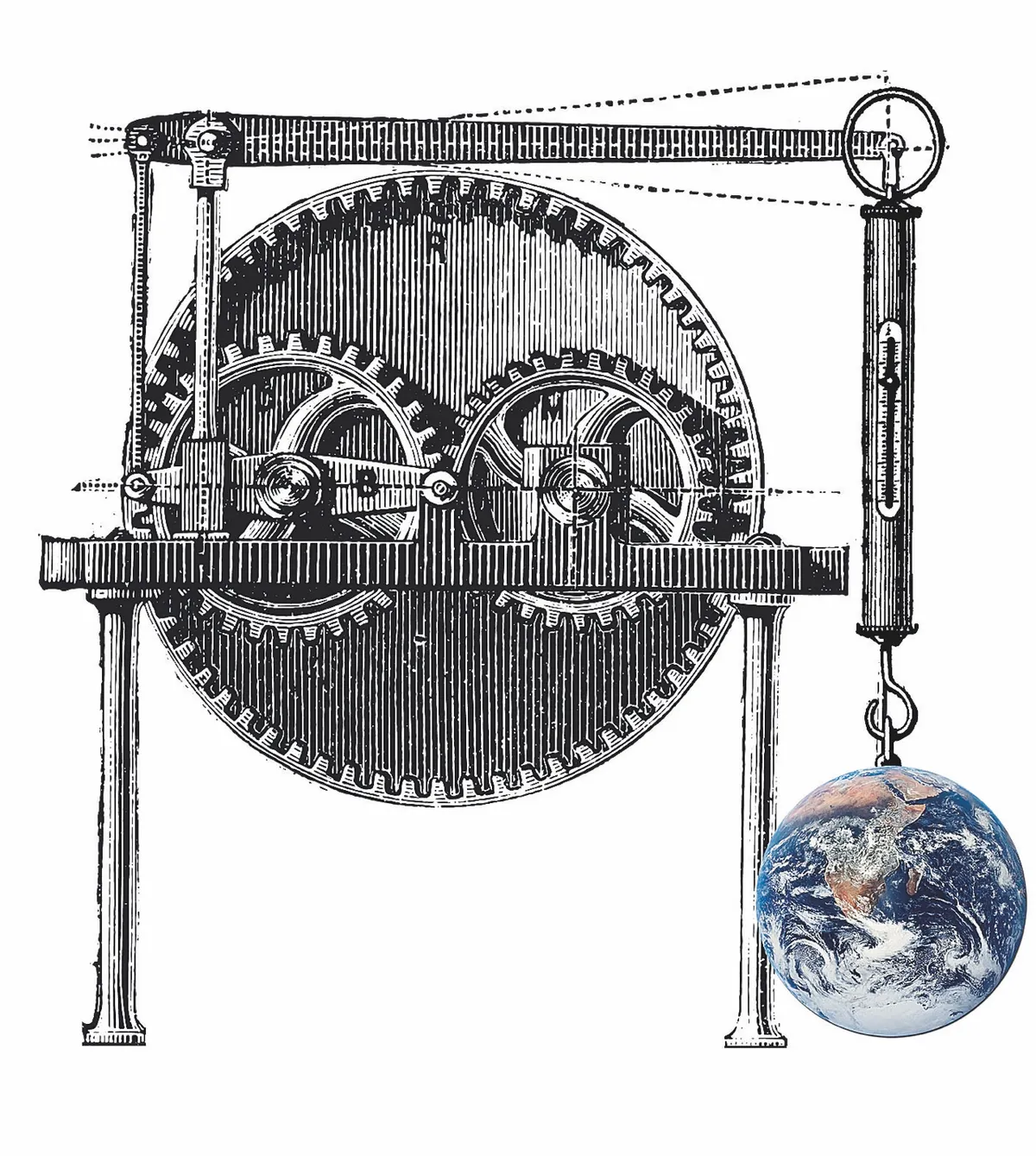
In his famous 1687 bookPrincipia, Isaac Newton mentioned the fact that a plumb bob would always hang vertically down towards the centre of Earth, unless there was a mountain nearby, in which case the bob would be pulled a little sideways by the gravitational effect of the mass of the mountain. He called this ‘the attraction of mountains’, but thought that in practice the effect would be too small to measure.
Measuring the attraction of mountains
Eighty years later the Astronomer Royal, Nevile Maskelyne, realised that if the effect could be measured, it might provide a way of measuring the mass of Earth. If someone could hang a plumb bob beside a mountain, see how much it was pulled sideways and estimate the mass of the mountain, then he could work out the mass of Earth. This was important, for it would allow him to calculate the masses of the Moon, the Sun and the other planets too. In 1772 he sent a proposal to the Royal Society.
The Royal Society approved of the idea, and dispatched surveyor Charles Mason around Scotland on horseback to find a suitable mountain. He returned after a long summer’s touring, and reported that the best mountain he could find was Schiehallion, 72 kilometres (45 miles) north of Perth.
Who should do it?
Maskelyne said he was too busy to undertake the experiment, and anyway he was the Astronomer Royal – which meant he would have to get permission from the King. Unfortunately the King was all for it, and gave him temporary leave of his duties; so the reluctant Maskelyne left his comfortable lodgings in Greenwich and headed north into the Highlands.
In the mountains
Schiehallion, 1,083 metres (3,543 feet) high, is a long, narrow mountain, lying roughly East-West. Maskelyne set up camp halfway up the middle of the South side. He had a bothy (a small hut), a large tent, a precision pendulum clock and a three-metre (10 foot) telescope borrowed from the Royal Society. He planned to work out his precise position by observing the stars overhead, using a plumb bob to determine the ‘vertical’. Unfortunately there was so much mist and rain that he could do no observing at all for two months, and it took him another month to work out exactly where he was.
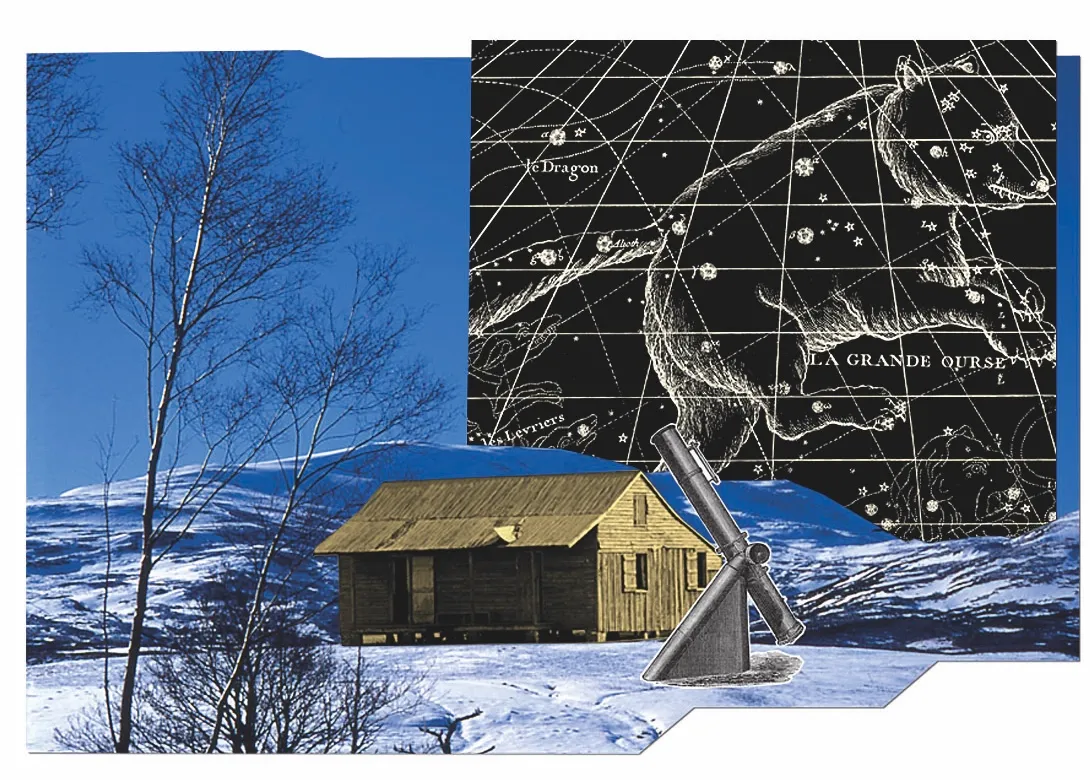
Then he moved round to the north side of the mountain – the move took an entire week – and did the same thing again. Meanwhile a team of surveyors, housed in rough tents, tramped around the mountain with chains (for measuring length), barometers (for measuring altitude), theodolites (for measuring angles) and other surveying equipment. They recorded thousands of angles and altitudes at different points, and worked out the distance between Maskelyne’s two camps. Maskelyne, using the stars above and the plumb bob, worked out the apparent positions of both his camps, and calculated how far apart they were. His measurement and the surveyors’ measurement differed by just 436 metres (1,430 feet), because he had been using verticals distorted by the attraction of the mountain. The discrepancy was less than he had expected, which meant that the average density of Earth was much greater than that of the mountain. This laid to rest one earlier theory, that Earth was hollow in the middle, like a tennis ball. On the contrary, said Maskelyne, it must have a metallic core. Now all he had to do was work out the mass of the mountain. He could estimate its density – that is its mass per unit volume – but he needed to find the volume of this awkward shape.
Calculating the volume
To do this he enlisted the help of a mathematician friend. Charles Hutton realised that he could use all the height measurements from the surveyors to work out the three-dimensional shape of the mountain. He wrote in his report that he had joined together with faint pencil lines all the points of equal height, which immediately gave him a good idea of the shape. In other words he invented what we know as contour lines. Knowing the volume of the mountain, Maskelyne and Hutton could work out its mass, and therefore the mass of the Earth, which came to about five thousand million million million tonnes. In the previous century, Newton had estimated the mass of the Earth at six thousand million million million tonnes, which in the end turned out to be more accurate. Nevertheless Maskelyne’s heroic experiment was the first attempt at the measurement of the mass of Earth.
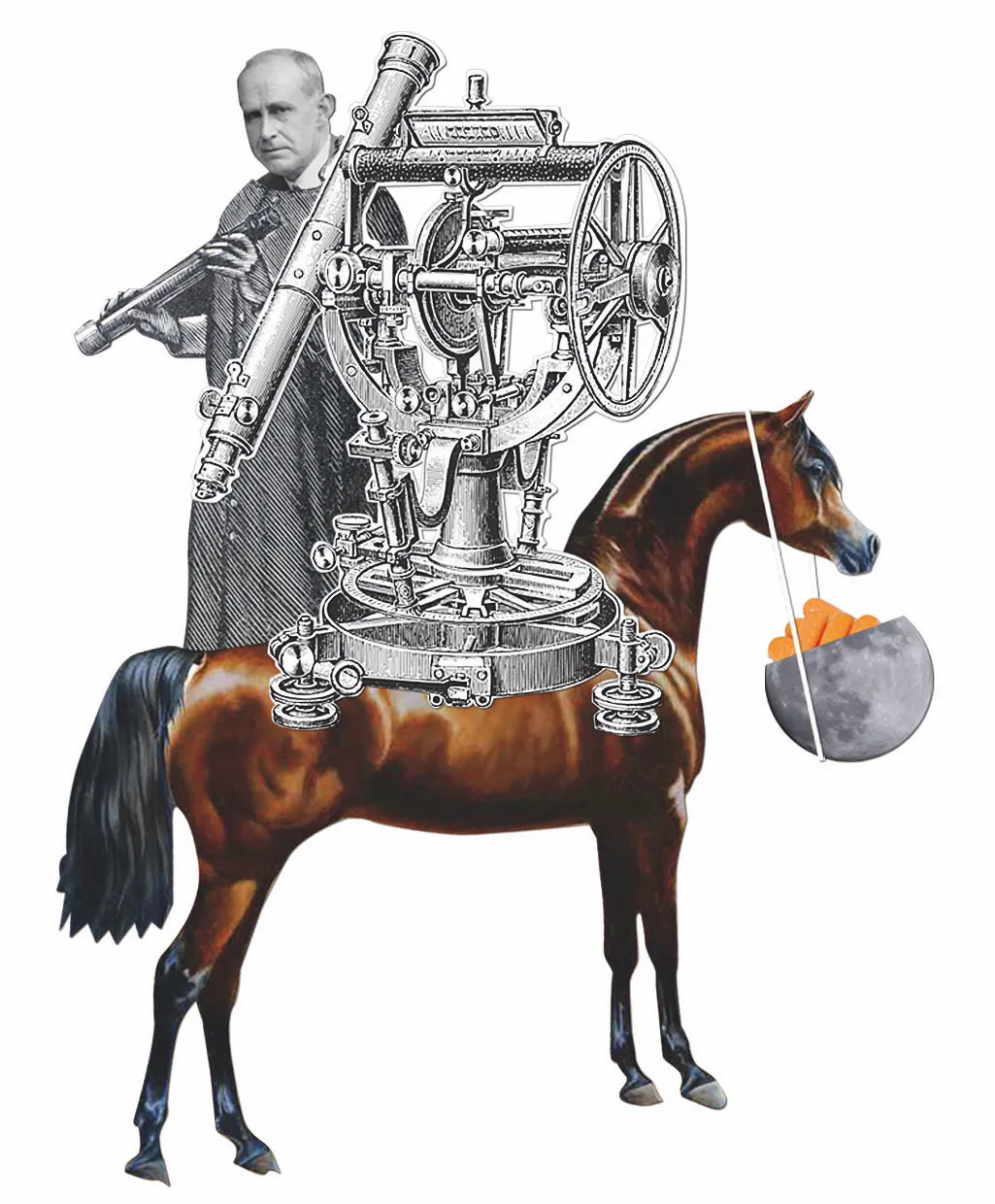
Could Einstein be proved right? (1919)
Practical confirmation of the theory of general relativity
Researchers:AS Eddington, FW Dyson, and C Davidson
Subject Area:Astrophysics
Conclusion:Einstein was right.
Born in Kendal, England, in 1882, Arthur Eddington, a Quaker and pacifist, became a professor of astronomy at Cambridge at the age of 31. He was intuitive, and had a tendency to make guesses about such topics as the structure of stars and where their energy comes from – and then look for evidence to back his hunches. Often he was proved right.
When Eddington heard about Einstein’s theory of general relativity he was excited. Britain and Germany were at war at the time; so no jingoistic Englishman would be interested, but he was a pacifist, and became the champion of relativity in Britain.
As a result he joined forces with the Astronomer Royal Frank Watson Dyson, and they persuaded the government to fund two expeditions to observe the total solar eclipse of 29 May 1919, in order to gather evidence which might support Einstein’s theory.
The prediction
General relativity predicted that gravity would bend rays of light. If light from a distant star passes close by the Sun, then the rays of light should be pulled in towards the sun by its huge gravitational field, and so the star should appear to be in slightly the wrong position.
Most of the time this is impossible to observe, because light from the sun prevents observation of distant stars that appear just past its edge (or ‘limb’). During a total eclipse, however, the Sun’s light is blocked by the Moon; so for a few minutes those stars are visible. Photographs taken during totality can be compared with others taken later, and the positions of the distant stars checked.
The effect was expected to be small. If the theory was correct the light would be bent by a minute angle. The circle is divided into 360° (degrees); each degree is divided into 60' (minutes); each minute is divided into 60" (seconds). The stars should appear further out from the Sun than they really are. Newtonian gravity predicted that the starlight would be bent by 0".87 (i.e., less than one second); Einstein predicted that the light would be bent by 1".75 – exactly twice as much.
Where in the world?
The path of the eclipse would run from Brazil across the Atlantic and across the middle of Africa to Lake Tanganyika. The researchers decided to send expeditions both to Sobral in Brazil and to the Portuguese island of Principe, in the Gulf of Guinea, west of central Africa.
They collected the best available telescopes, had special collapsible huts made and embarked on theAnselmon 8 March 1919. The Brazil team arrived on the Brazilian coast on 23 March and eventually proceeded to Sobral by steamer and train.
Meanwhile, the Principe team travelled on theAnselmas far as Madeira, then transferred to thePortugal, and reached Principe on 23 April. They set up their equipment in a small walled enclosure looking west, down towards the ocean.
The day of the eclipse
In Brazil the morning was cloudy, and at the time of ‘first contact’ (when the Moon begins to cross the face of the Sun) there was nine-tenths cloud, but they could just see enough of the Sun to get their telescopes lined up accurately. Then gradually the clouds separated, and one minute before totality they had a clear space around the Sun. As the Sun disappeared they started a metronome, and one of them called out every tenth beat; that was how they timed their exposures. Using two cameras they exposed a total of 27 photographic plates.
The Principe team were less fortunate. There was a heavy thunderstorm on the morning of the eclipse, which was due at 2:15 p.m. There was thick cloud most of the morning, and then by 1:55 they could see the Sun through drifting cloud. They managed to expose 16 photographic plates, but only seven were useful.
They were nearly marooned for months on the island by a strike in the steamship company, but managed to return to England on 14 July.
Results and conclusion
The paper describing their expedition is 45 pages long, and contains many pages of tables and calculations, but the overall results for the bending of starlight were:
Brazil 1".98 ± 0".12
Principe 1".61 ± 0".30
These results are both much closer to the prediction from general relativity of 1".75, rather than the Newtonian value of 0".87, and therefore were strong evidence for Einstein’s theory. (The ± numbers are the estimated errors; so they calculated the Brazil result to be between 1".86 and 2".10.)
During the 1920s and 1930s Eddington wrote many popular books on relativity, atoms, stars and cosmology, and gave dozens of lectures and interviews, as well as becoming a radio star and a household name.
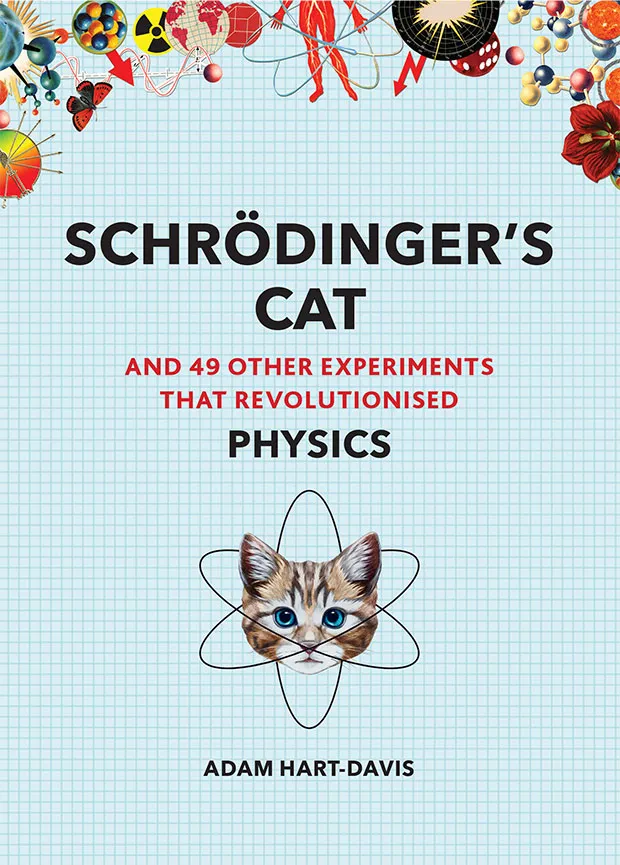
Follow Science Focus onTwitter,Facebook, Instagramand Flipboard